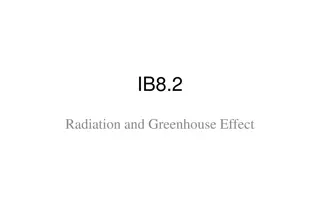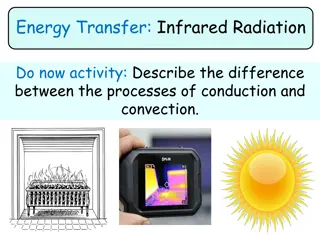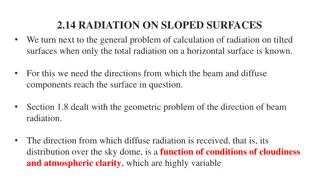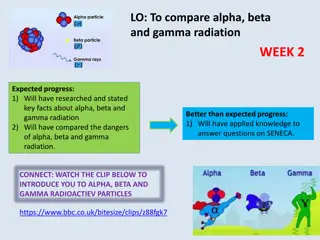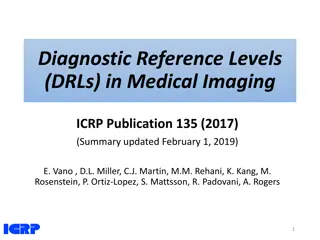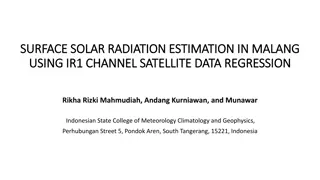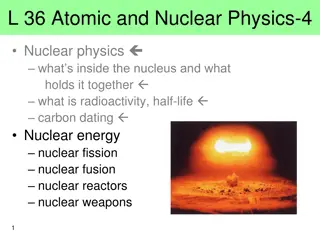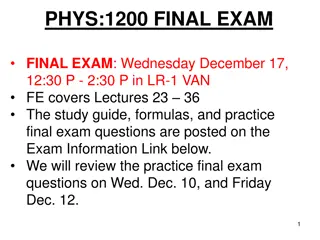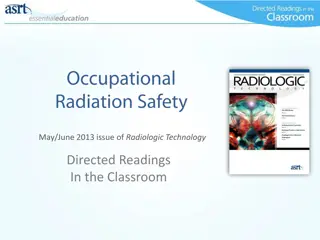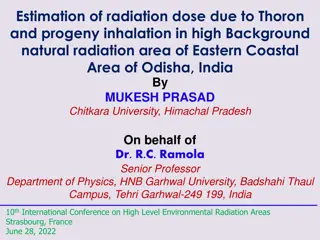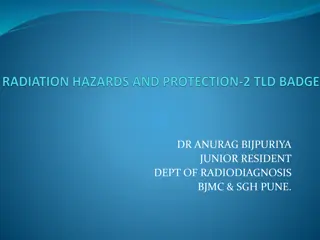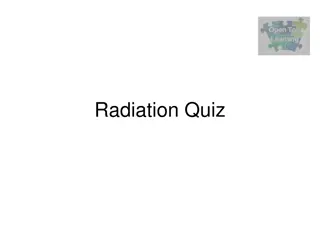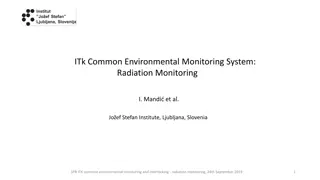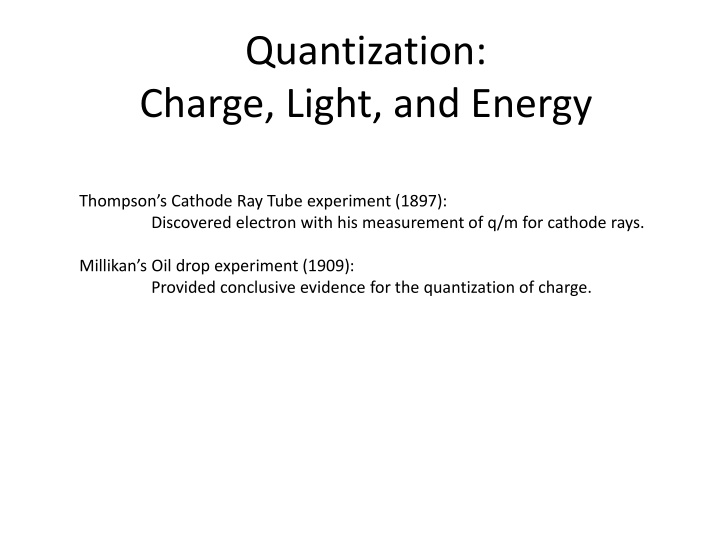
Quantization of Charge, Light, and Energy in Radiation Phenomena
Explore the groundbreaking experiments of Thompson and Millikan that revealed the quantization of charge, delve into the concept of radiation and black body radiation, and learn about the laws governing radiant energy emission such as the Planck Radiation Law and Stefan-Boltzmann Law.
Download Presentation

Please find below an Image/Link to download the presentation.
The content on the website is provided AS IS for your information and personal use only. It may not be sold, licensed, or shared on other websites without obtaining consent from the author. If you encounter any issues during the download, it is possible that the publisher has removed the file from their server.
You are allowed to download the files provided on this website for personal or commercial use, subject to the condition that they are used lawfully. All files are the property of their respective owners.
The content on the website is provided AS IS for your information and personal use only. It may not be sold, licensed, or shared on other websites without obtaining consent from the author.
E N D
Presentation Transcript
Quantization: Charge, Light, and Energy Thompson s Cathode Ray Tube experiment (1897): Discovered electron with his measurement of q/m for cathode rays. Millikan s Oil drop experiment (1909): Provided conclusive evidence for the quantization of charge.
Radiation Radiation is the process in which energy is transferred by means of electromagnetic waves. Heat transfer by radiation can take place through vacuum. This is because electromagnetic waves are involved in radiation and they can propagate through empty space.
Black Body The temperature of the lampblack block rises faster than the silver block because the black surface absorbs radiant energy from the sun at a greater rate. Since absorption and emission are balanced, a material that is a good absorber, like lampblack, is also a good emitter, and a material that is a poor absorber, like polished silver, is also a poor emitter. A perfect blackbody, being a perfect absorber, is also a perfect emitter.
BB Radiation: Experiment VS. Theory Experimental data is represented by circles. Rayleigh-Jeans law (classical) theory. Planck s law (quantum mechanics) http://hyperphysics.phy-astr.gsu.edu/hbase/mod6.html https://phet.colorado.edu/sims/blackbody-spectrum/blackbody-spectrum_en.html
http://csep10.phys.utk.edu/astr162/lect/light/radiation.html Planck Radiation Law The primary law governing blackbody radiation is the Planck Radiation Law. Planck used quantization of energy (??= ? ?) to derive it. It gives the intensity of radiation emitted as a function of wavelength for a fixed temperature. 2 ? ?2 ? ??? 1) ? ?,? = ?5(? The above function includes the parameter, h came to be known as Planck s constant, which Planck adjusted so that his curve matched the experimental data at all wavelengths.
The StefanBOLTZMANN Law Of Radiation The rate at which an object emits radiant energy is proportional to the fourth power of its absolute temperature. Q = = eAT 4 . P t is the Stefan-Boltzmann constant: = 5.67 10-8 W/m2.K4. e is called the emissivity: a number between 0 and 1. For perfect radiators e = 1. A is the surface area. T is the temperature of the radiator in Kelvin.
Ex. 3-1 (Modern Phys by Tipler) Q = = eAT 4 . P t A star with a surface temperature of 3000 K radiate 100 times the power radiated by Sun, whose surface temperature is 5800 K. Express the radius of the star in terms of the radius of Sun.
Peak of Black Body Radiation http://www.globalchange.umich.edu/globalchange1/current/lectures/universe/universe.htm Wien s Law: ??? = 2.898 10 3m.K




